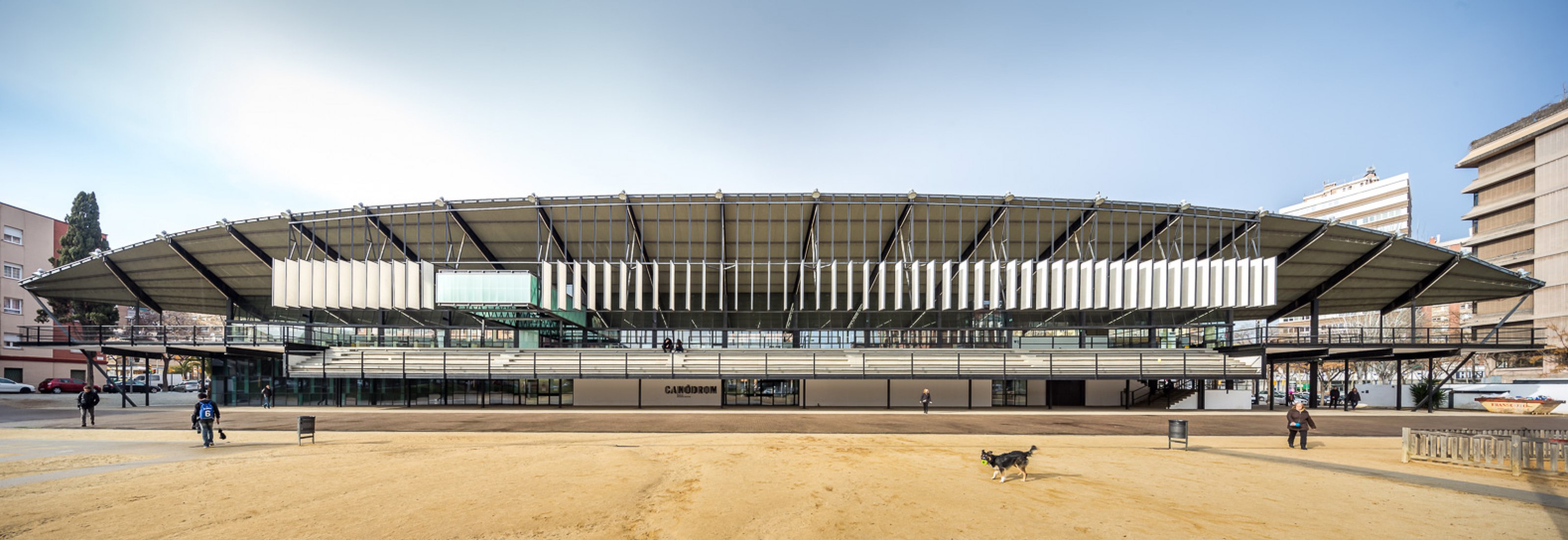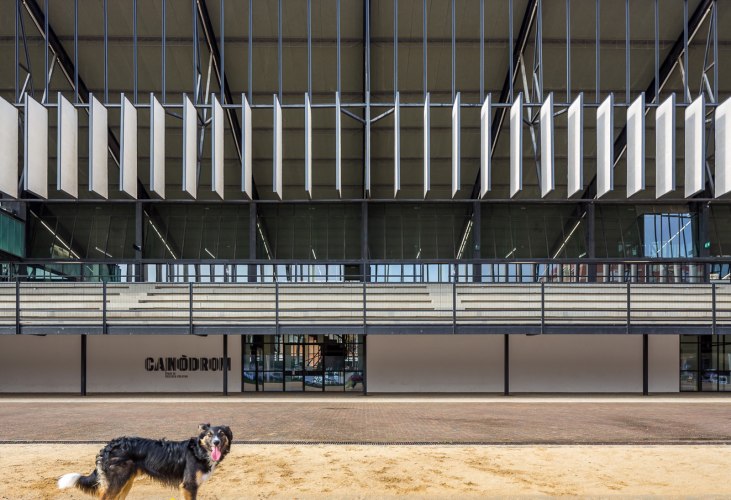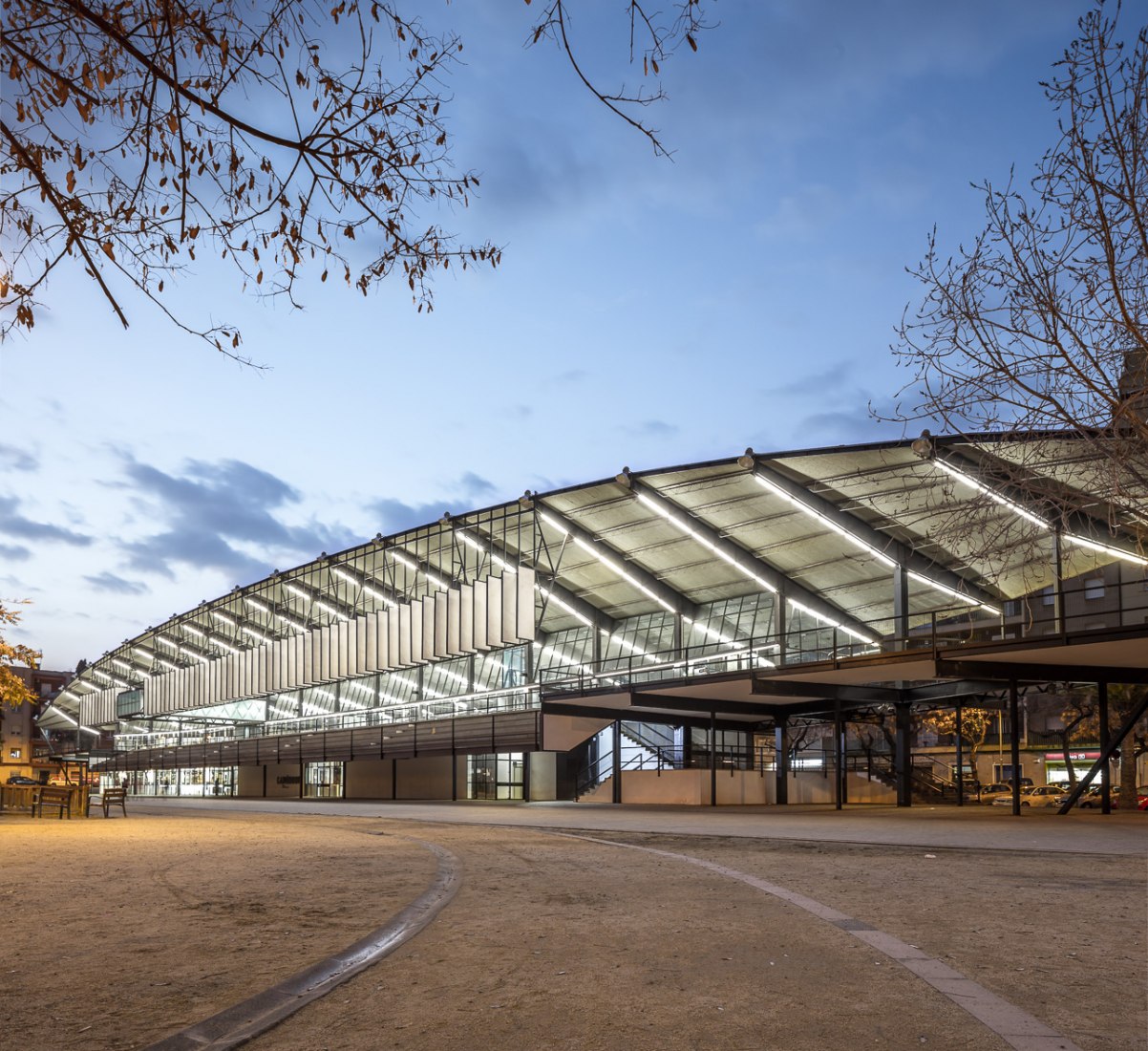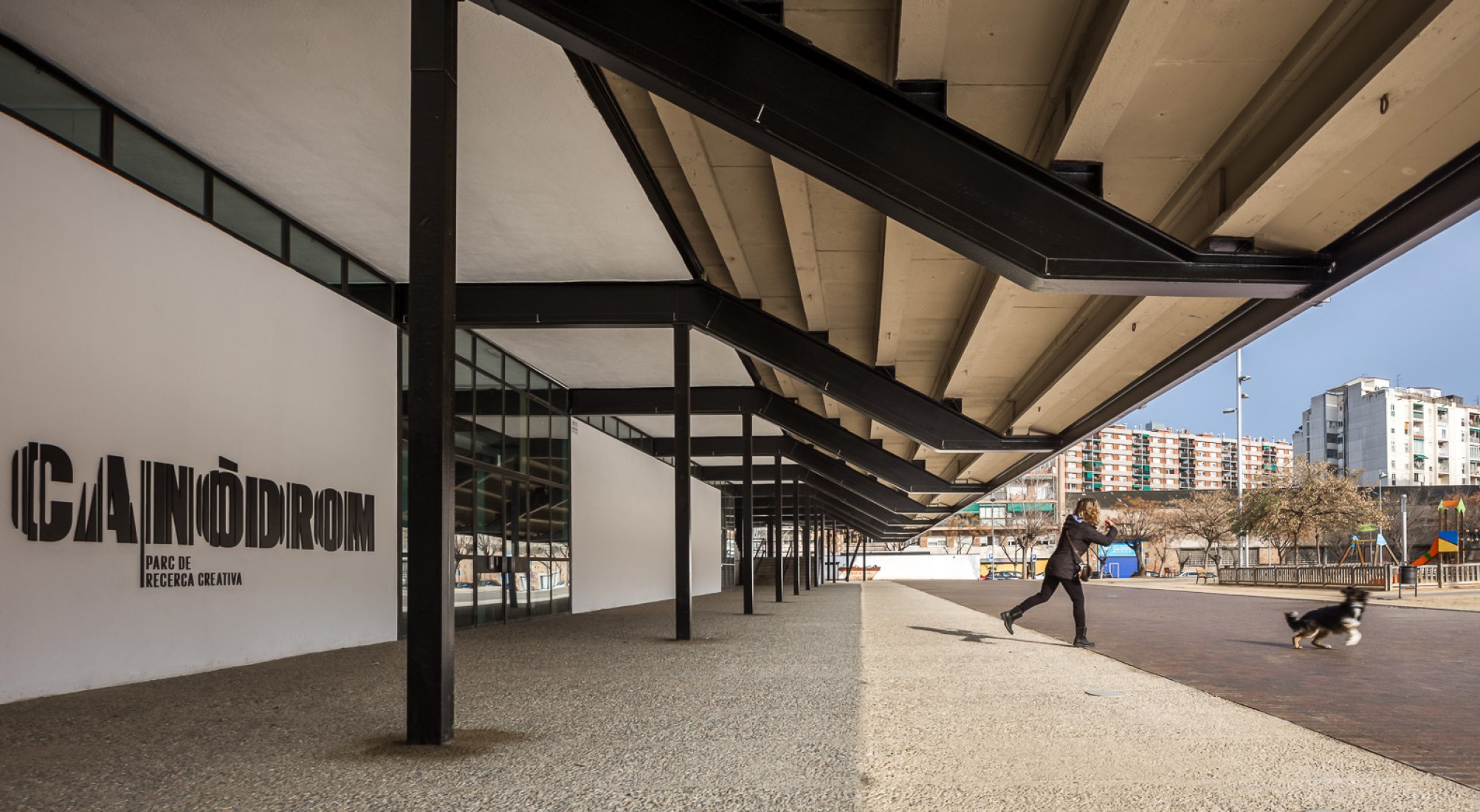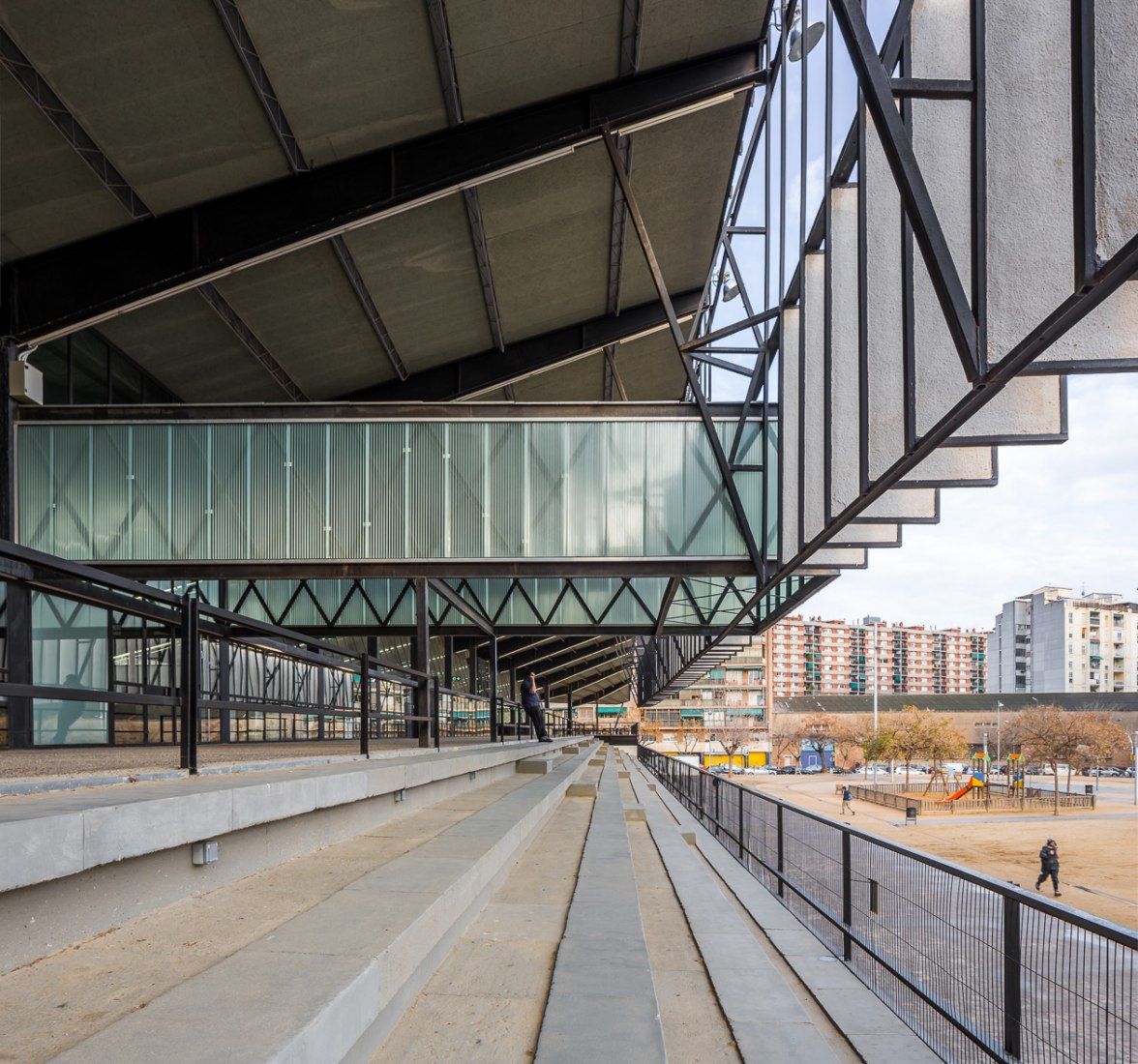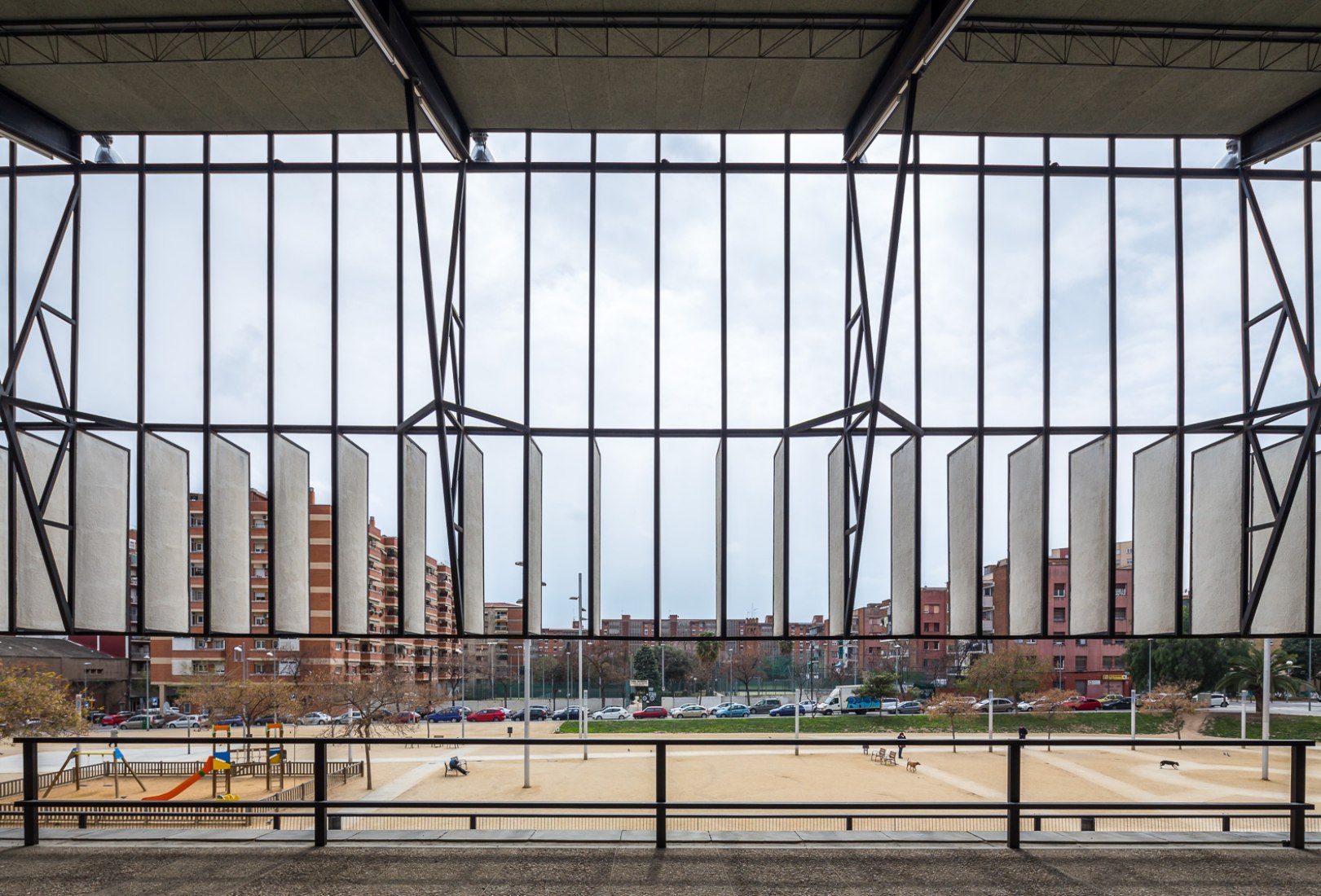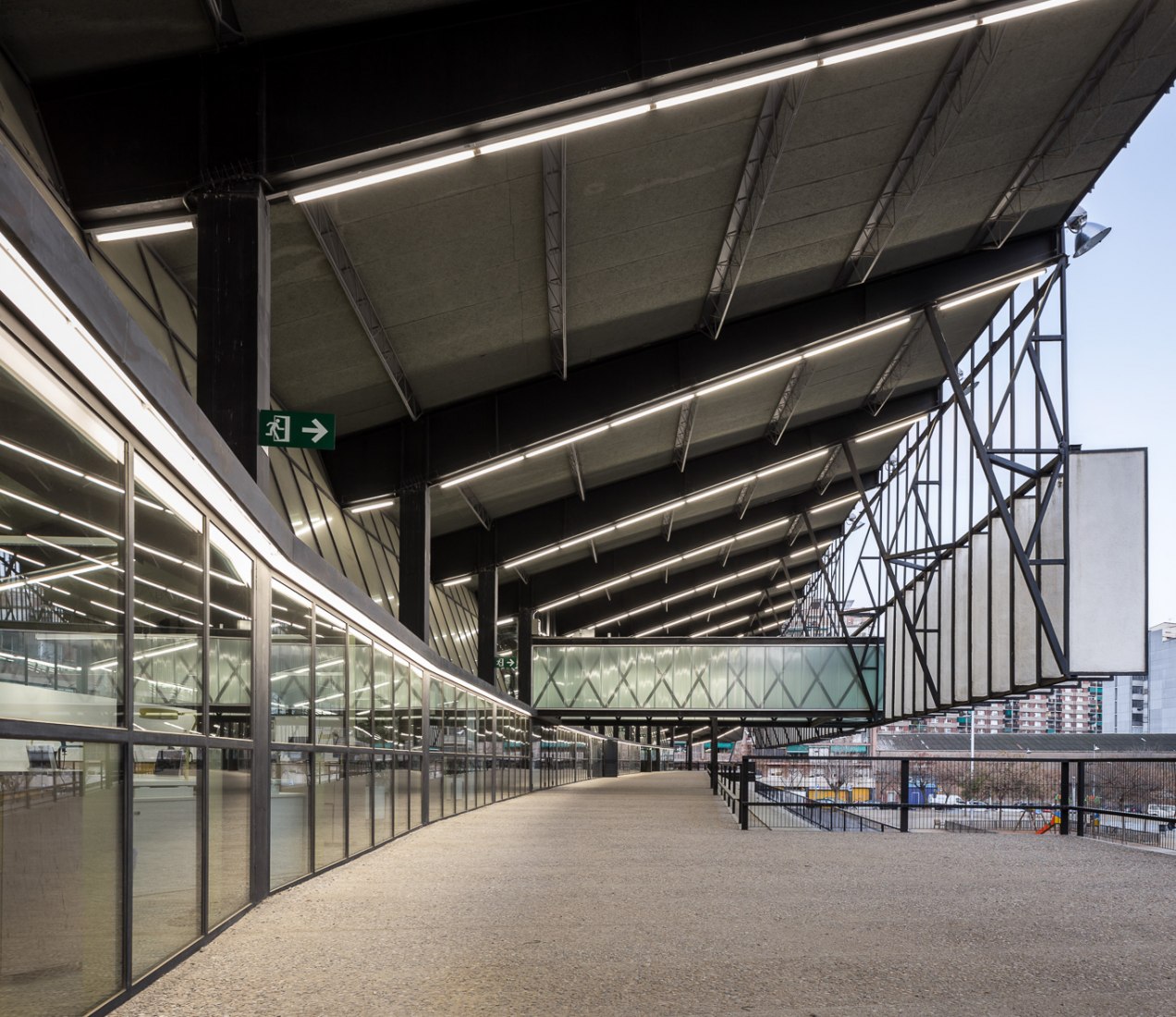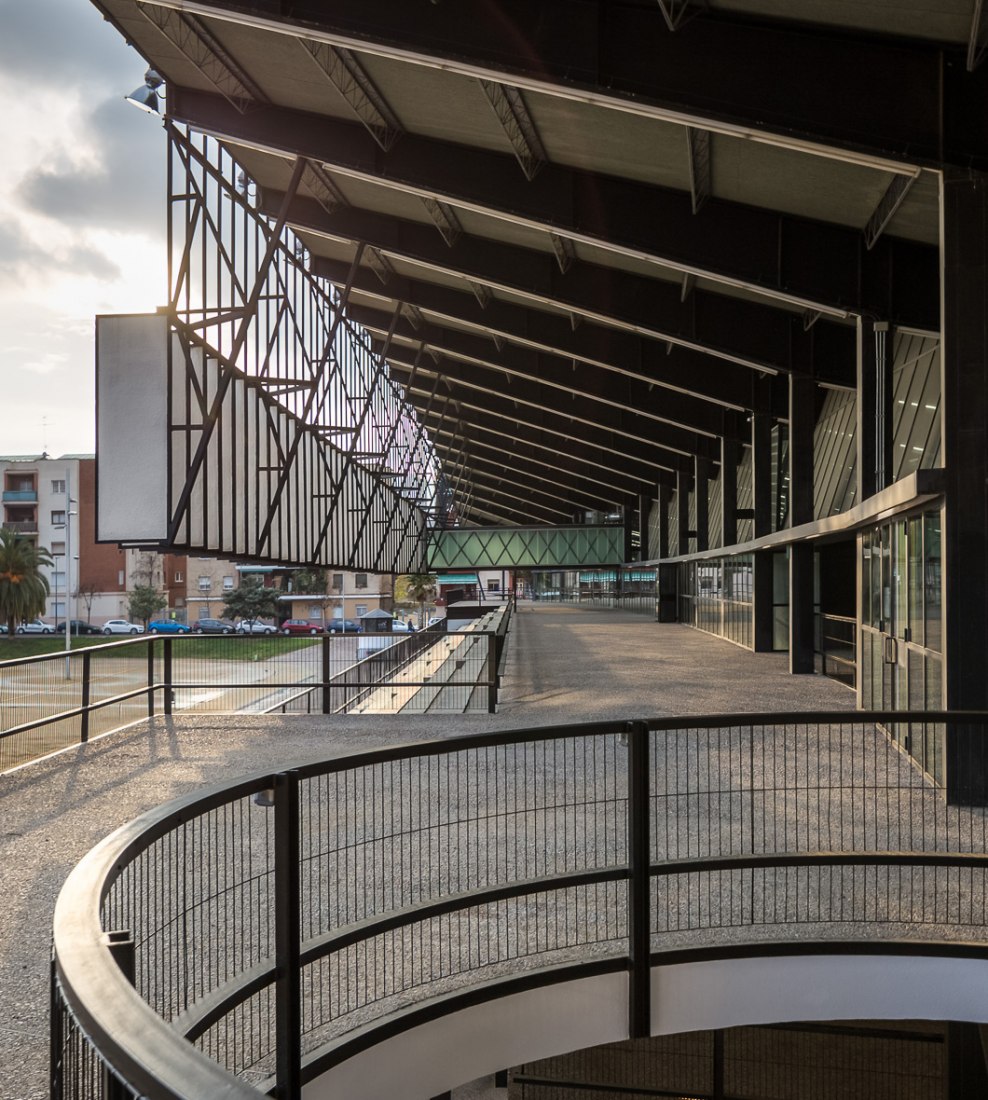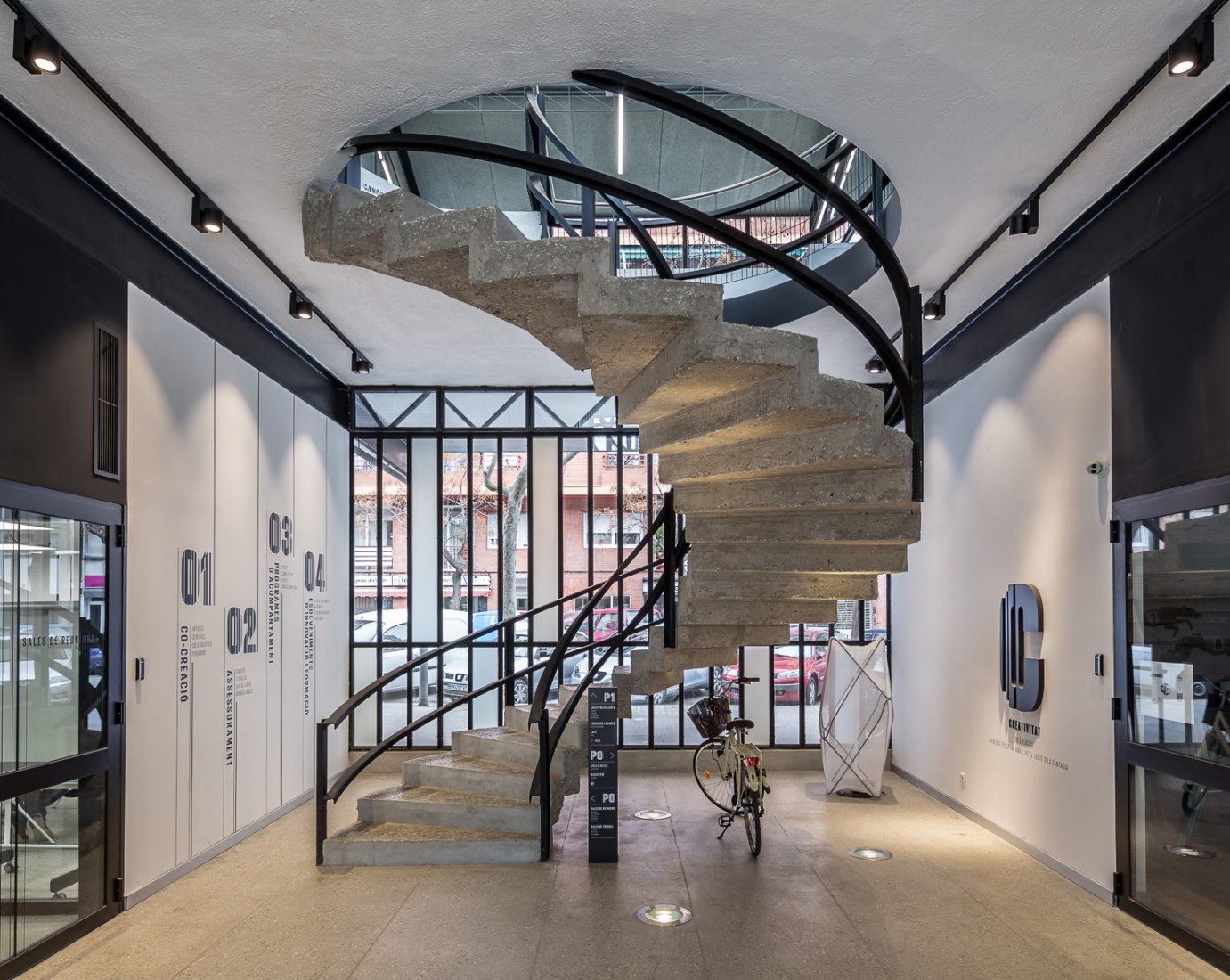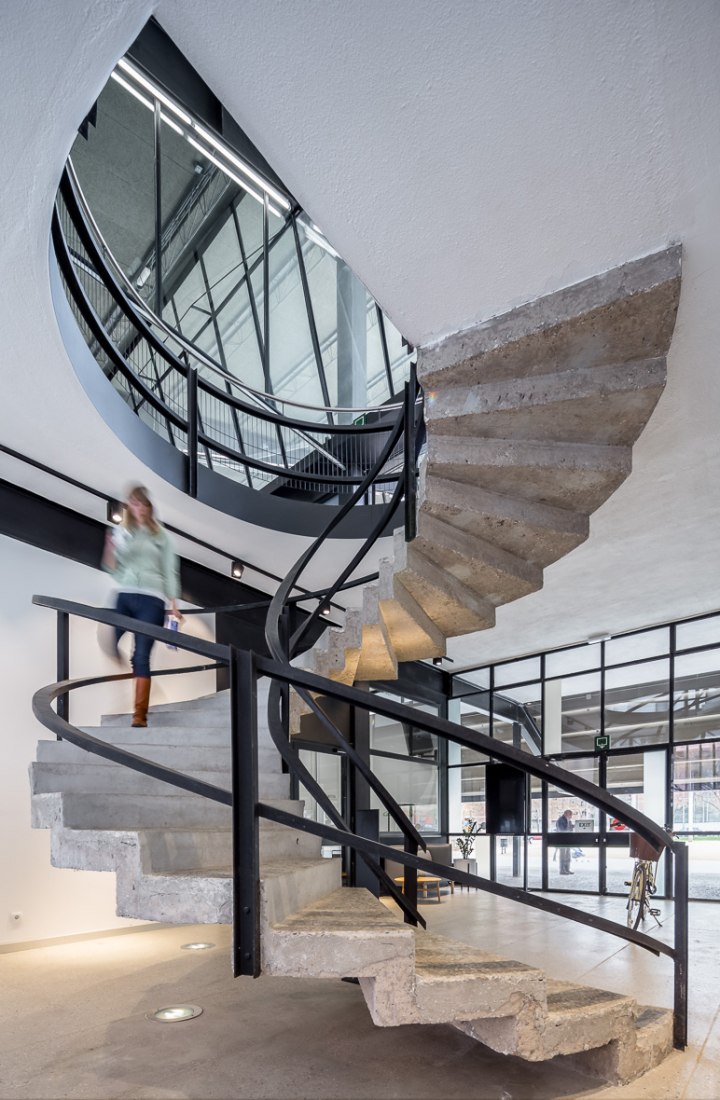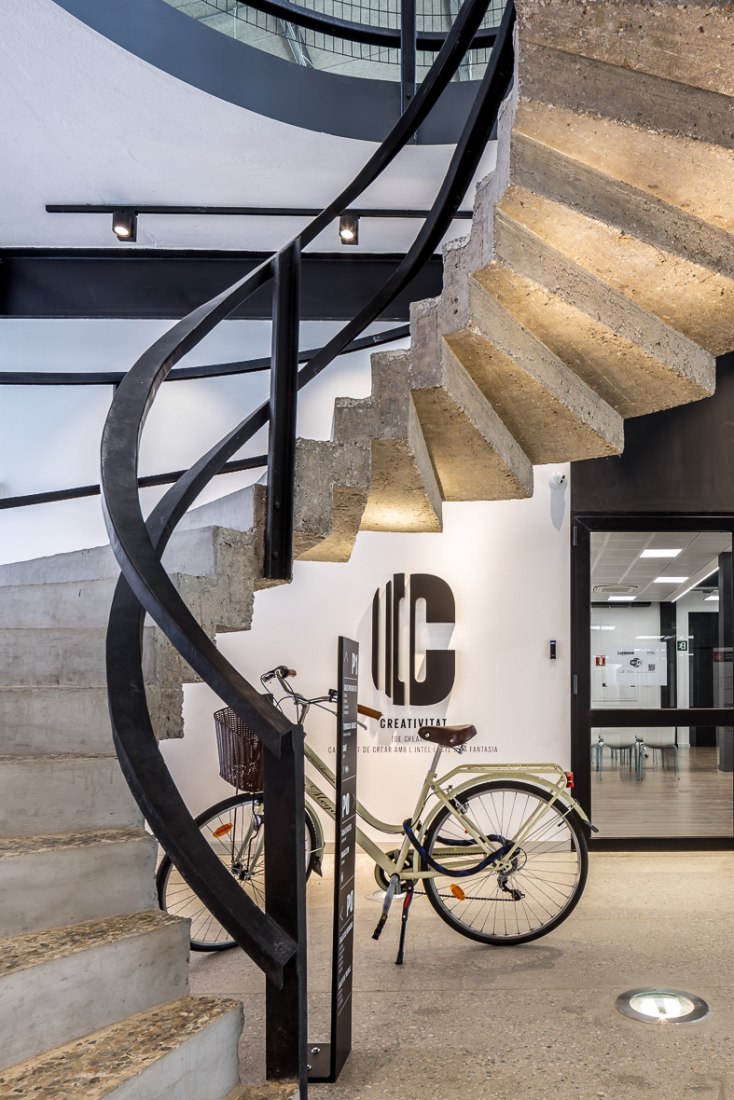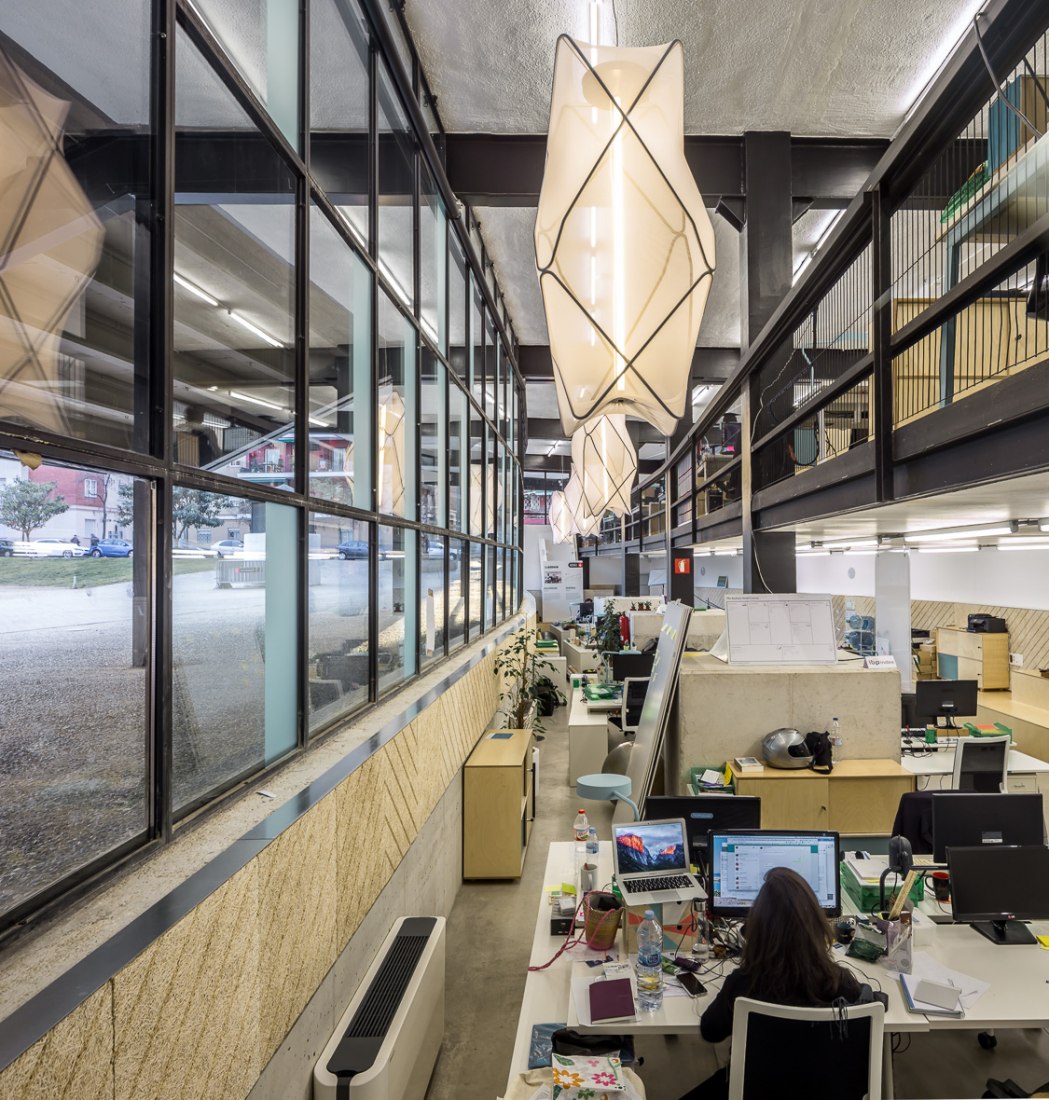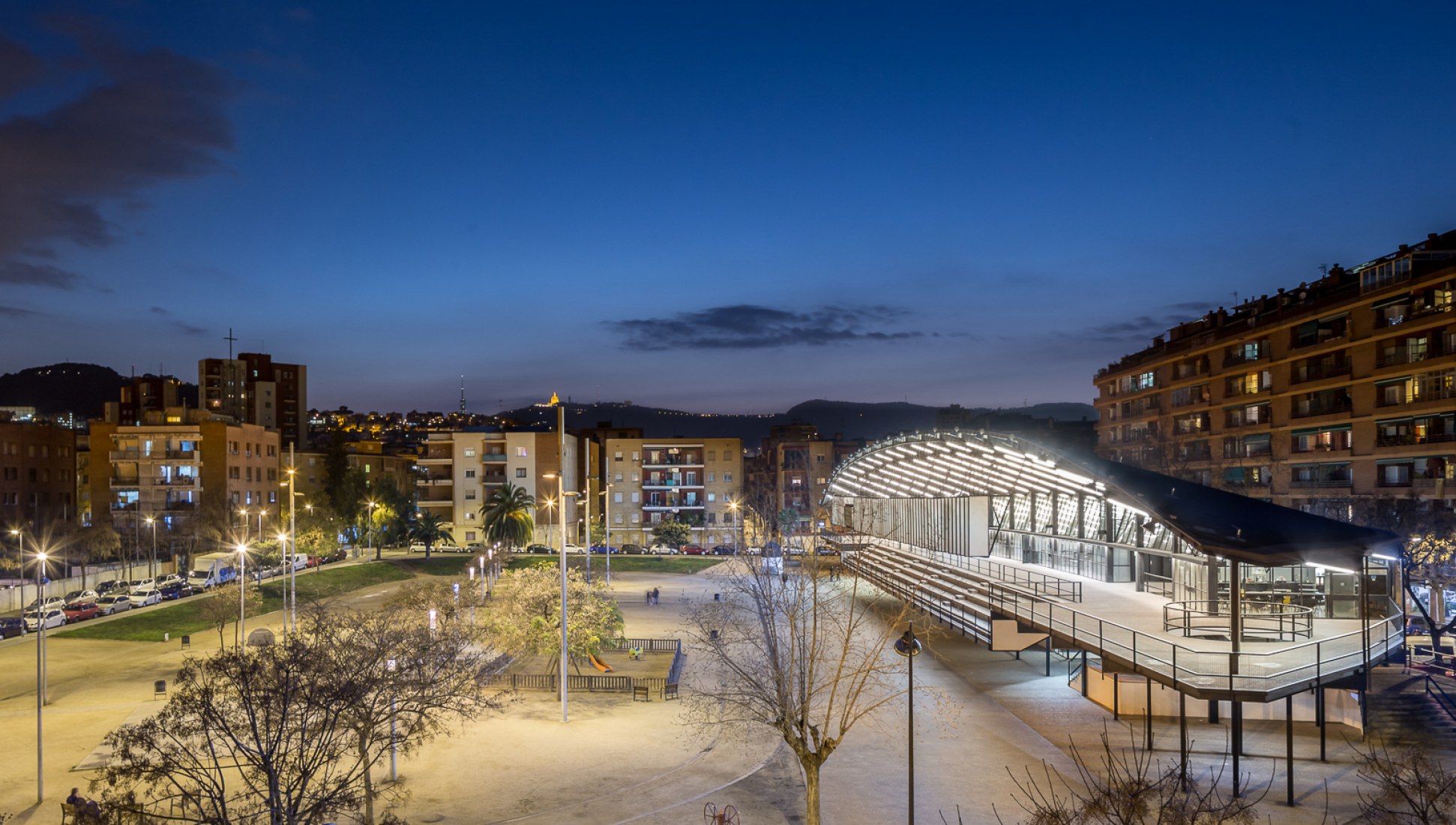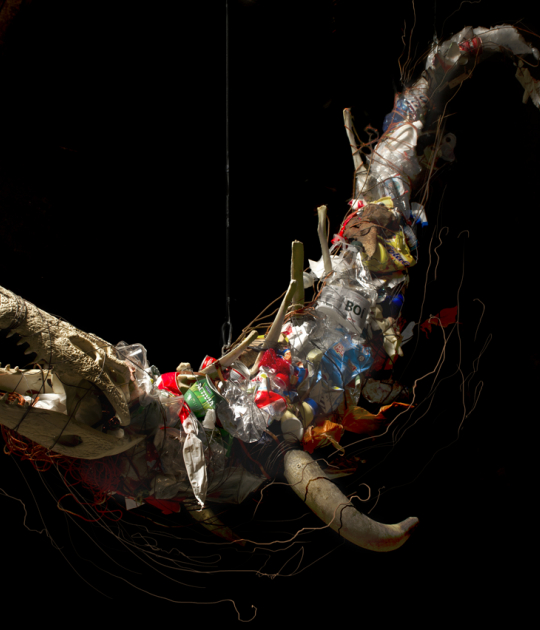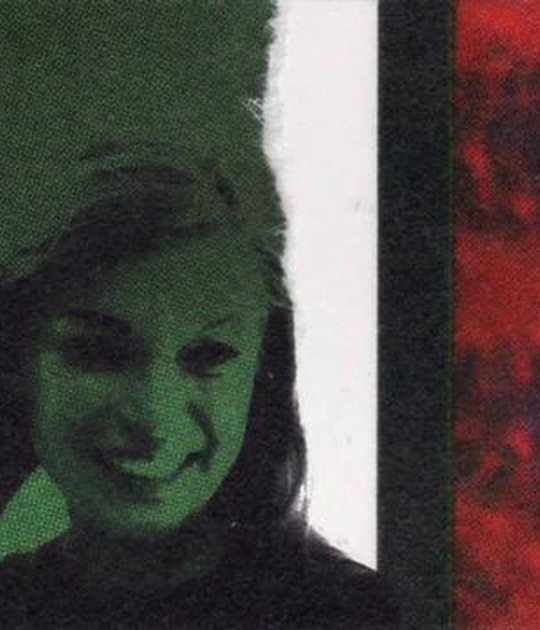Meridiana Greyhound Track is built between 1961 and 1964, in the very near ground Avenue of the same name located north of Barcelona. This area had begun to urbanize from the Houses of the Eucharistic Congress of 1951, a process was extending to other operations of social housing that ended framing the building designed by Antonio Bonet and Josep Puig Torné, and brilliantly photographed by Català Roca in the sixties, (These shots are very good also by Simón García).
The general shape of the building is strongly conditioned by the structural solution that determines the presence of three floating figures: the parabolic foil cover, vertical striations of the brise-soleils, and the set of bleachers and terrace. The cover sheet is a regulated form developed by the displacement of a line between two guidelines: a parabolic ground and vertical elevation (on the exterior facade of the building, towards the Riera street Horta) and other satellite elevation straight floor (interior facade). These two lines of different length (107 m on the line parallel to the track), are divided into equal parts, which together define the alignments of the crugias. Following these radial routes the main structure consists of 18 steel beams singing and variable length sloping towards the street at the same angle and supported on a single line of pillars in the central area of the plant is distributed.
The possible sway tensioning is stabilized by linking the deck beams with slab on the outside terrace and the brisesoleils on the inside. Also, two metal struts and bracing work with visually lighten the ends and covered terraces. The historical reference to this ingenious solution is the Hippodrome de la Zarzuela in Arniches, Dominguez and Torroja, held in 1941. perpendicular to the main structure sense openwork straps soul and distributed triangular section, consisting of four rounds (two down and two up) connected to a light stirrup zigzag. The floors are concrete, precast concrete bleachers and the plane of the cover is solved by a self-supporting agglomerated (Virotem) with asflática finished with a dry cloth.
The ground floor is dedicated to service spaces, kennels, toilets, offices, lockers and a restaurant next to the nearby staircase to the paddock area, from where you can contemplate greyhounds at rest. On the roof terrace of the upper floor, the betting area and the bar closes overlooking the street Riera de Horta are situated, wrapping the terrace and stands as a large concavity, from which you can enjoy an excellent view track located to the south. A matching mezzanine with the finish area, can accommodate the space judges, speaker, timekeepers, controls and photographer. The finishes are of great crudity, carpentry laminated structure perfilerías and gray lead, natural chipboard panels, white yodel and faience in brown and amber plasters.
After the closing, many neighborhood movements for the recovery of the dog track building using it as a cultural space for the quarter were generated. A total of up to 35 entities neighborhoods Congrés and Els Indians worked together to decide what equipment were needed. Therefore, in 2009 we proceeded to make a first renovation of the building under the direction of the architects Xavier Monteys, Josep Maria de Lecea, Laura and Marta Lopez Aybar. The work was very conservative, because being a listed historical building heritage of the city could not make any changes to its original structure. Only the track disappeared and closed the enclosure walls, becoming a space for the ride and the sport as well as enabling a playground. Since February this year the Greyhound Park has been transformed into a business incubator for future entrepreneurs.
Dedicated to greyhound racing, the only pure Spanish race, this building had its splendor between the 60s and 2000. Once ceased its main activity has been combined use in planning. Reconverted park endowments for the neighborhood, its main building, protected, would be turned into a museum. However, 10 years after its closure, this February was opened as a business incubator.
More information
Published on:
October 12, 2016
Cite: "A second life for Meridiana Greyhound Track" METALOCUS.
Accessed
<http://www.metalocus.es/en/news/a-second-life-meridiana-greyhound-track>
ISSN 1139-6415
Loading content ...
Loading content ...
Loading content ...
Loading content ...
Loading content ...
Loading content ...
Loading content ...
Loading content ...
Loading content ...
Loading content ...
Loading content ...
Loading content ...
Loading content ...
Loading content ...
Loading content ...
Loading content ...
Loading content ...
Loading content ...
Loading content ...
Loading content ...
Loading content ...
Loading content ...
Loading content ...
Loading content ...
Loading content ...
Loading content ...
Loading content ...
Loading content ...
Loading content ...
Loading content ...
Loading content ...
Loading content ...
Loading content ...
Loading content ...
Loading content ...
Loading content ...
Loading content ...
Loading content ...
Loading content ...
Loading content ...
Loading content ...
Loading content ...
Loading content ...
Loading content ...
Loading content ...
Loading content ...
Loading content ...
Loading content ...
Loading content ...
Loading content ...
Loading content ...
Loading content ...
Loading content ...
Loading content ...

